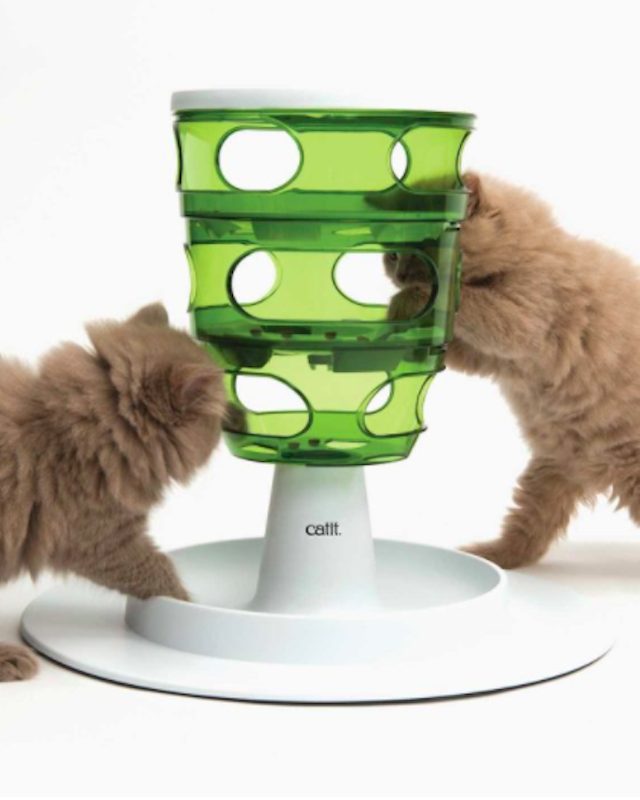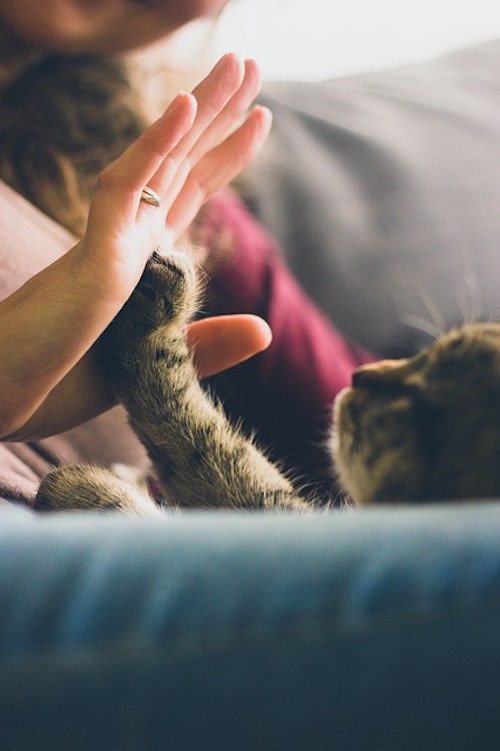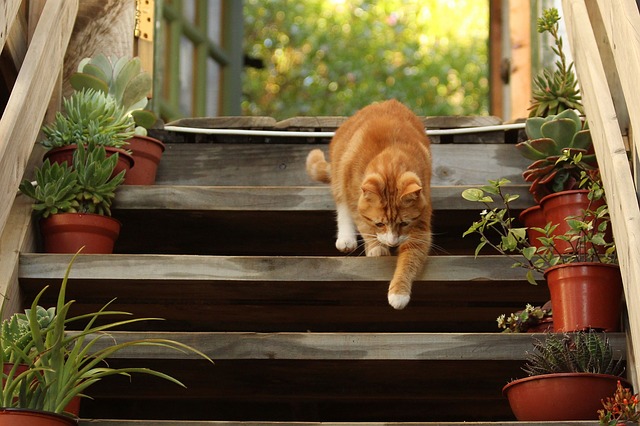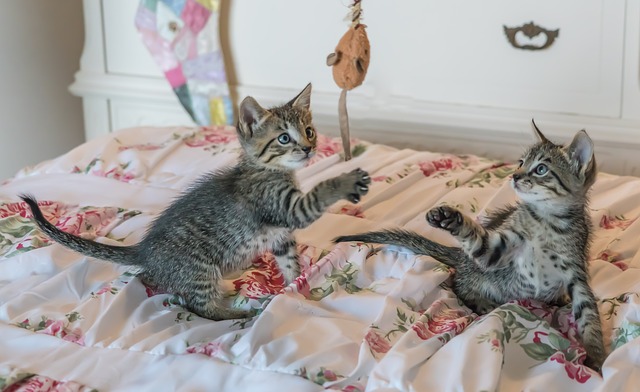We know that humans tend to be “righties” or “lefties,” meaning we are more comfortable and coordinated using our dominant hand for most tasks, especially writing.
But did you know that our feline friends — and lots of other species, for that matter — can also have a preference for one side or the other?
In a recent study, 44 cats were observed to see if they were dominant using their right or left side. The subjects included 24 male and 20 female cats of all different breeds. They were all spayed or neutered, and were between the ages of 1 and 17. What’s more, the felines were able to stay in their own homes and were analyzed by their owners, eliminating the unnecessary stress of being outside their familiar surroundings and in the presence of strangers.
The kitties were observed during three specific “spontaneous” behaviors — lying on their sides, stepping down a flight of stairs, and stepping over a raised object — as well as the orchestrated task of reaching for snacks in a tiered food maze (see image below).

The results showed that cats not only seem to prefer using either their left paw or their right paw, males were more likely to be “lefties” and females to be “righties”! (As far as choosing which side of their bodies to lie on, there was no significant evidence that one side was preferable over the other.)
Aside from being interesting, knowing if your companion is right- or left-paw dominant can give pet parents insight into their feline friend’s personality.
In a story by National Public Radio (NPR), study co-author and Animal Behaviour Centre Director Deborah Wells explains:
“Beyond mere curiosity, there may be value to knowing the motor preference of one’s pet. There is some suggestion that limb preference might be a useful indicator of vulnerability to stress. Ambilateral animals [with no preference for one side or the other], and those that are more inclined to left-limb dominance, for example, seem more flighty and susceptible to poor welfare than those who lean more heavily towards right limb use.
We have just discovered that left-limbed dogs, for example, are more ‘pessimistic’ in their outlook than right-limbed dogs. From a pet owner’s perspective, it might be useful to know if an animal is left- or right-limb dominant, as it may help them gauge how vulnerable that individual is to stressful situations, e.g. captive housing, trips to the vet, fireworks, etc.”
Could our cats’ paw preferences actually help us understand them better? Wells continued in the article:
“Limb preference is associated with greater activity of the contralateral motor cortex. The observation of a preferred limb or paw can therefore be considered an indication of brain laterality.
Left-limbed animals, which tend to be right-hemisphere dominant, show stronger fear responses than right-limbed animals, which tend to be left-hemisphere dominant. Left-sided biases of aggression, reactivity to fear-inducing stimuli and vigilance behavior have also been noted in numerous species. Animals that are ambilateral tend to show poorer processing between the two hemispheres, which, in turn, can augment stress reactions.
So, by knowing whether an animal shows left/right limb preference (or is ambilateral) we can understand a bit more about which side of its brain it is relying on, and hence its vulnerability to stress.”
Have you noticed whether your kitty is a “righty” or a “lefty”? Do you think it has a direct correlation with their personality? Will you be watching your cat more closely in order to find out? Tell us in the comments below!
(h/t: NPR)



